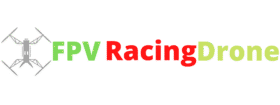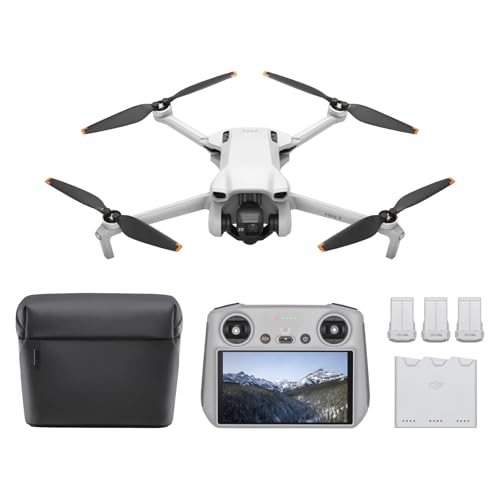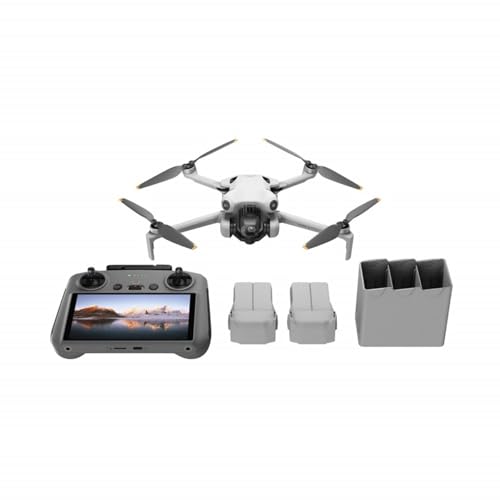Are you an avid hunter looking to gain a significant edge in your pre-season scouting? Or perhaps a wildlife enthusiast keen on observing deer movement without disturbance? Drones have become a revolutionary tool in the outdoor world, offering an aerial perspective that ground scouting simply can’t match. When it comes to pinpointing elusive game, especially deer, selecting the best drone for finding deer can feel like a daunting task.
This article dives into the features that make a drone truly effective for deer scouting and highlights our top pick, designed to help you uncover those hidden pockets of activity. Forget hours trudging through dense brush; with the right drone, you can survey vast areas, identify deer trails, and even spot thermal signatures from above. Let’s explore how drone technology is changing the game for hunters and observers alike.
Why Use a Drone for Deer Scouting?
Using a drone for pre-hunt scouting or wildlife observation offers several distinct advantages:
- Efficiency: Cover large tracts of land in a fraction of the time it would take on foot. This is particularly useful for expansive properties or public land.
- Unbiased Perspective: Get an objective, birds-eye view of the terrain, revealing patterns and areas you might miss from the ground.
- Reduced Disturbance: Scout without leaving your scent or spooking game. Drones allow for remote observation, keeping you hidden and the wildlife undisturbed.
- Thermal Imaging: Advanced drones equipped with thermal cameras can detect heat signatures, making it possible to locate deer even in thick cover or after sundown. This is a game-changer for finding those bedding areas.
- Data Collection: Map out food sources, bedding areas, travel corridors, and even potential stand locations with unprecedented accuracy.
While drones offer incredible capabilities, it’s crucial to remember that their use for actual hunting (spotting and then immediately pursuing/shooting) is illegal and unethical in most places. The focus here is on scouting, observation, and land management. Always check your local and state regulations regarding drone usage for wildlife.
What Makes a Great Deer Scouting Drone?
When you’re searching for the best drone for finding deer, several key features stand out:
- Camera Quality: High-resolution optical cameras (4K is ideal) are essential for identifying terrain features, food plots, and deer sign.
- Thermal Imaging: This is arguably the most valuable feature. A good thermal camera can detect the heat signature of deer, even at night or in dense foliage where a regular camera would struggle. Look for FLIR (Forward-Looking Infrared) integration for superior performance.
- Battery Life & Flight Time: Longer flight times (30+ minutes) are crucial for covering large areas without needing to land and swap batteries frequently.
- Range & Transmission: A drone with a robust, long-range video transmission system ensures you maintain a clear view even when the drone is far away.
- Durability & Weather Resistance: Scouting often means operating in varied weather conditions. A rugged, weather-sealed drone will stand up to the elements.
- Ease of Use & GPS: Intuitive controls, stable flight, and reliable GPS for waypoint navigation make scouting simpler and more effective.
- Obstacle Avoidance: For navigating dense woodlands, an effective obstacle avoidance system can prevent costly crashes.
Now, let’s dive into our top recommendation.
Canada Hunts East Drone

If you’re serious about taking your deer scouting and wildlife observation to the next level, the Canada Hunts East Drone is engineered to deliver. Built with the demanding conditions of North American wilderness in mind, this isn’t just another consumer drone. It’s a robust piece of aerial technology designed for hunters, land managers, and wildlife enthusiasts who need reliable performance, exceptional thermal capabilities, and the durability to withstand challenging environments. What truly sets it apart is its specialized thermal vision, finely tuned to cut through the unique atmospheric conditions often found in temperate and cold climates, making those elusive heat signatures of deer pop out against the landscape.
Key Features:
– Advanced FLIR Thermal Vision for unparalleled heat signature detection, even through light cover.
– High-Resolution 4K Optical Camera for crisp, detailed terrain mapping and visual identification.
– Extended Cold-Weather Battery Life, offering up to 45 minutes of flight time, optimized for cooler temperatures.
– Rugged, Weather-Sealed Design (IP54 rated) for reliable operation in rain, snow, and dusty conditions.
– Long-Range HD Video Transmission (up to 7km) ensuring clear visuals from afar.
– Intelligent Obstacle Avoidance System for safer navigation through dense forest and uneven terrain.
– Quiet Propulsion System designed to minimize disturbance to wildlife.
– GPS Waypoint Navigation and Follow Me modes for automated scouting routes.
Pros:
– Exceptional thermal performance specifically calibrated for wildlife detection in varying conditions.
– Superior build quality, making it highly durable for challenging outdoor use.
– Impressive flight time and extended range allow for comprehensive area coverage.
– User-friendly interface with advanced autonomous flight capabilities, simplifying complex scouting tasks.
– Invaluable for pre-season scouting, habitat analysis, and tracking game movement patterns.
Cons:
– Premium price point, representing a significant investment for many users.
– May have a steeper learning curve for new drone pilots due to its advanced features.
– Slightly bulkier design compared to some compact consumer drones, impacting portability.
– Users must be diligent in understanding and complying with local drone regulations, especially concerning wildlife.
User Impressions:
Hunters and land managers who have integrated the Canada Hunts East Drone into their routine rave about its transformative impact on their scouting efforts. Many highlight its reliable performance in cold and damp weather as a standout feature, making those early morning pre-hunt surveys far more productive. Users consistently praise its ability to cut through the thickest brush with its thermal camera, revealing deer movement patterns they’d never spotted before. While the initial cost is often mentioned as a consideration, the overwhelming consensus is that it’s a worthwhile and powerful tool for serious deer management and observation.
FAQ: Your Top Questions About Drones for Deer Scouting Answered
Q1: Are drones legal for finding deer or hunting?
A1: This is a critical point! While drones are generally legal for scouting before a hunt (e.g., mapping terrain, identifying trails), using them to spot game and then immediately pursue or shoot is illegal in most, if not all, states and provinces. Regulations vary wildly, so you must check your specific local, state, and federal laws before operating any drone for wildlife observation or hunting purposes. Always prioritize ethical hunting practices.
Q2: What’s the most important feature for a drone used to find deer?
A2: Hands down, a high-quality thermal imaging camera is the most valuable feature. While an optical camera helps with general terrain mapping, thermal cameras detect the heat signatures of deer, allowing you to locate them even when they’re hidden by foliage, at night, or in low-light conditions.
Q3: Can thermal drones see through trees or thick cover?
A3: Thermal drones can’t “see through” solid objects like dense trees, but they can detect heat signatures through light foliage, gaps in cover, or when the deer are partially obscured. Their effectiveness decreases with denser cover. However, they are excellent for spotting deer in open fields, bedding areas, or along tree lines, especially at dawn or dusk when temperature differences are more pronounced.
Q4: How far can these drones fly, and what about battery life?
A4: Most high-quality scouting drones offer flight ranges of several kilometers (3-7 miles or more) and come with impressive battery life, often ranging from 25 to 45 minutes per charge. For extensive scouting, carrying multiple charged batteries is highly recommended. Always be mindful of your drone’s battery level and ensure you have enough power for a safe return.
Q5: Do I need a special license to operate a drone for deer scouting?
A5: In the United States, if you’re flying your drone for recreational purposes, you generally need to register it with the FAA if it weighs over 0.55 pounds and pass The Recreational UAS Safety Test (TRUST). If you’re using it for commercial purposes (e.g., as part of a paid land management service), you’ll need a Part 107 license. Again, check your local aviation authority’s rules.
Q6: How can drones help with pre-season scouting and habitat analysis?
A6: Drones are incredible for pre-season scouting. You can map out property lines, identify potential food plots, locate bedding areas, track deer movement patterns over time, and even assess habitat health. This aerial intelligence helps you plan stand locations, understand deer behavior, and make informed decisions long before the season begins, without ever setting foot on the ground and leaving your scent.
Q7: Is it ethical to use a drone to find deer?
A7: The ethics largely depend on how you use the drone. Using it for pre-season scouting, land management, or observing wildlife from a respectful distance without disturbing them is generally considered ethical. Using it to directly spot and pursue game for a kill is widely considered unethical and is illegal in most jurisdictions. Always prioritize the welfare of the animals and fair chase principles.



